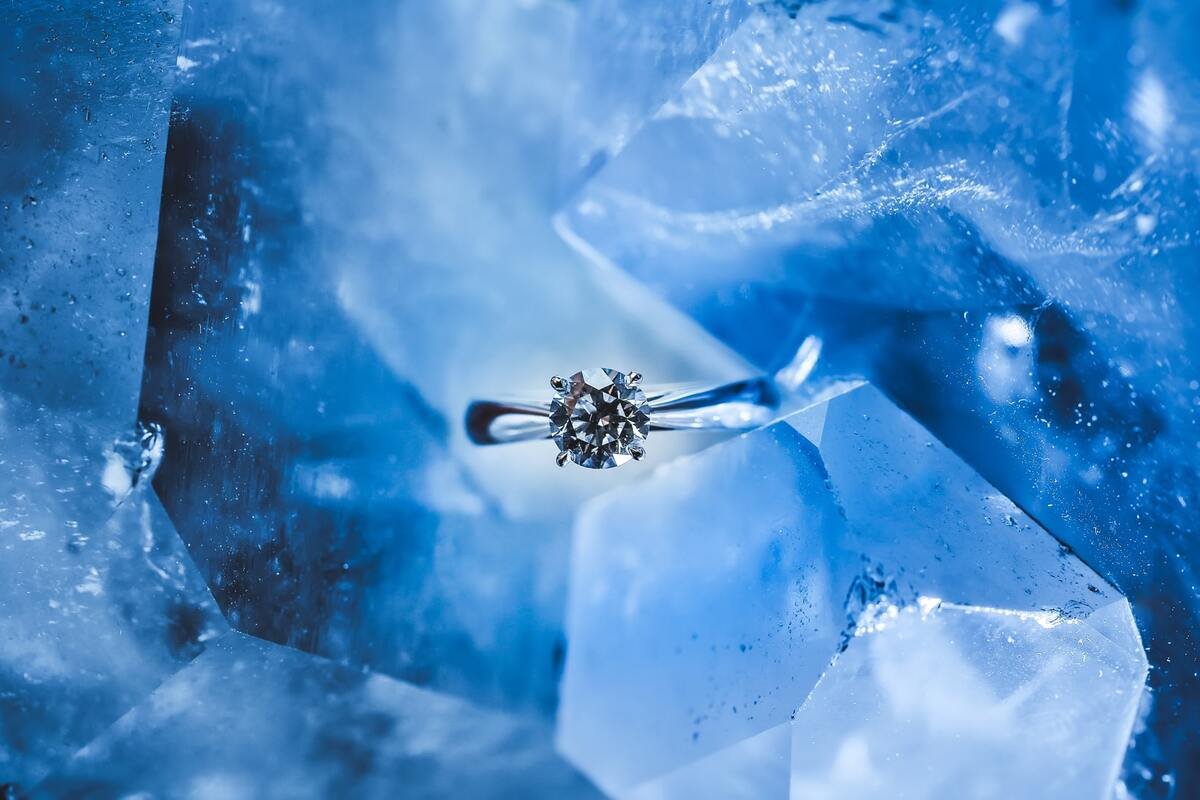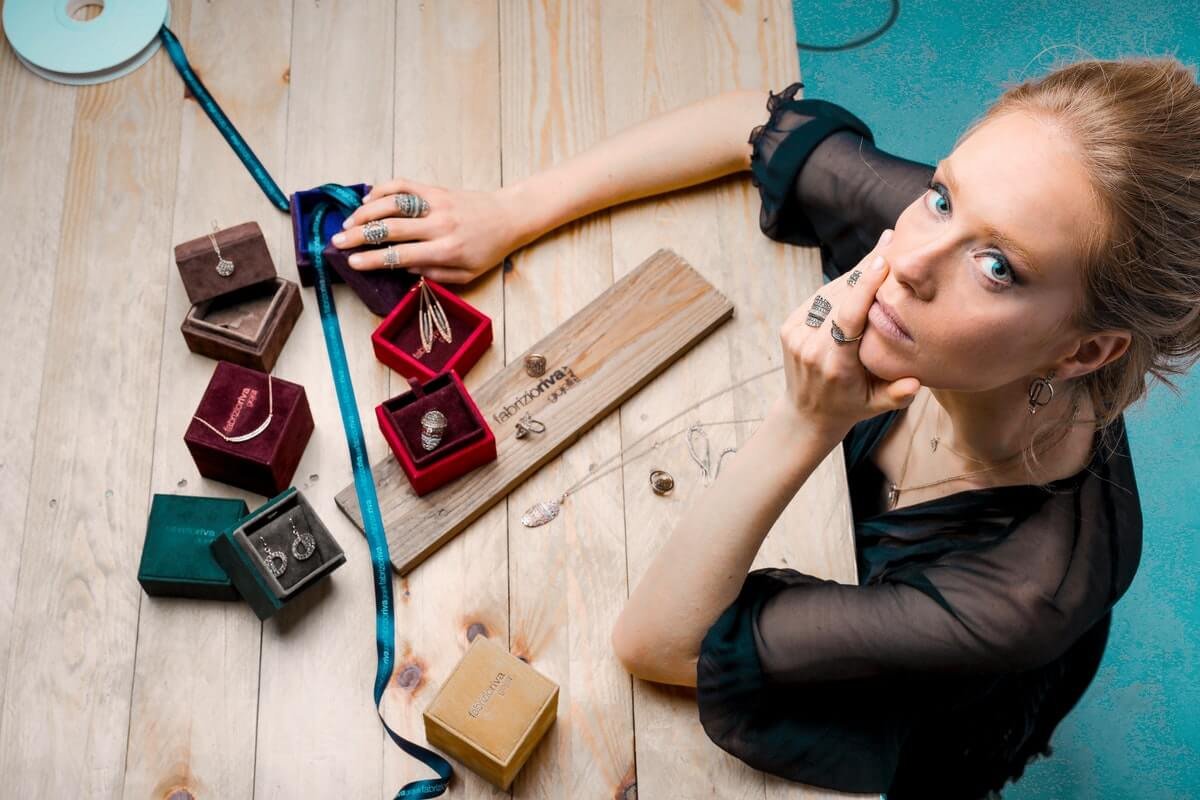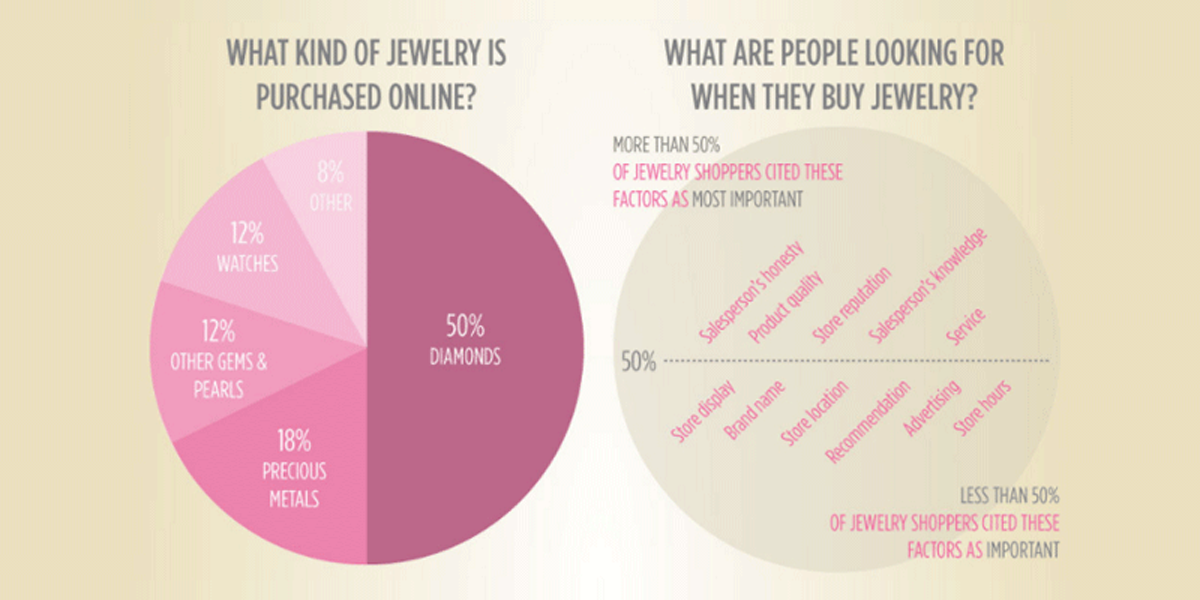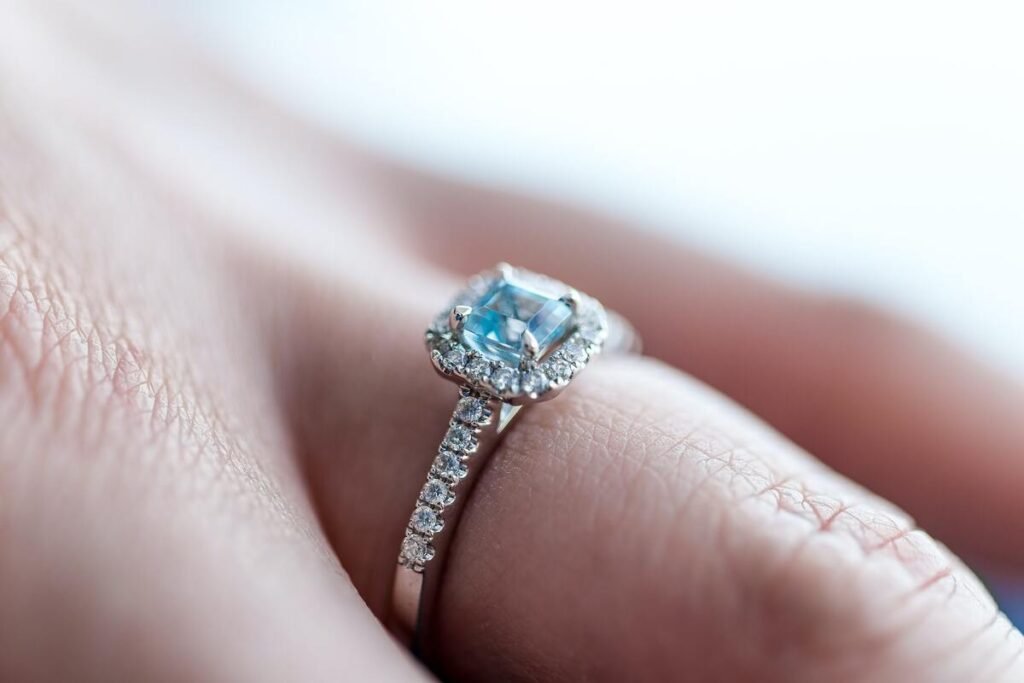Gemstones have been one of mother earth’s favored gifts and resources. For the longest time, people have been fascinated by them. There are many gems with differing names, components, and colors. However, we shall place the spotlight on the blue gemstones.
Top Blue Gemstones for Fancy Jewelers
Gemstones, also known as gems, fine gems, jewels, or precious stones, are mineral crystals used in molding jewelry and other valuable adornments. They’re polished and cut to form the adorn the beautiful jewelry that you might be wearing now.
Aside from jewelry and other similar body adornments, gemstones are also engraved and carved in cups and vases. Since their discovery, gems became luxurious art forms. Things other than jewelry with authentic gemstones in them have a high value.
We all know that gemstones vary in color. The most popular kinds are the green, purple, red, and blue gemstones. In this article, we’ll focus on blue gemstones. These stones are often associated with peace and contentment. Want to know more about this precious stone? Read on.
Which Precious Stones are Blue?

As mentioned, different gemstones have various colors, and one of the most prominent colors is blue. Blue stones and crystals are one of the most in-demand for jewelry, however rare. Here’s a list of some popular blue-colored gems:
Sapphire
Sapphire is statistically the most popular and in-demand of all blue gemstones in terms of faceting. If you don’t know, this stone can be a teal gemstone and can occur in various colors, except for red. Sapphire’s common and well-known shades range from blue to violet. These shades are caused by the trace amounts of titanium and iron that are found in the precious stone’s crystal structure. To improve its color and quality, sapphire often undergoes heat treatment.
Also, royal engagements considered sapphire as one of the most popular options for engagement rings. So, if you wanna cop that royal engagement feel, sapphire is the stone to go!
Aquamarine
Ah! The beautiful, calming stone that everyone loves to gaze at. An aquamarine gem is known for its watery blue and blue-green hues. However, it never becomes the dark blue tones of sapphire and tourmaline. Aquamarine is the birthstone for March and it served as a talisman to help keep sailors safe at sea.
Like sapphire, this beautiful gem undergoes regular heat treatment to lessen its green hue and keep it in a purer blue shade. However, not all aquamarine gems respond to the heat-treatment process. Some stones retain their attractive sea-foam, blue-green color.
Turquoise
Turquoise, the December birthstone, is the most popular of all blue gemstones. It’s widespread in inexpensive jewelry shops and designer pieces. You may notice that some turquoise gems are extremely resistant to scratch, while others would easily scratch. It’s because the gem’s hardness ranges from 3 to 7.5, and low-grade turquoise often undergoes stabilization to intensify its color.
Turquoise gems have a deep ancient symbolism, making them the jewelers’ favorite. However, synthetic imitations of this gemstone are available on the market, so be careful and be discreet in buying your jewelry.
Speaking of jewelry buying, you may read our Claire’s review and check their amazing hoop earrings.
Tanzanite
This gemstone is only abundant in a small portion of Tanzania and just recently became popular. With its blue to violet hues due to heat treatment, this gem naturally mimics sapphire at a price’s fraction. While tanzanite easily chips off if knocked upon a surface, it’s still a great alternative to sapphire.
You may wonder: is blue or purple tanzanite more valuable? The value of a tanzanite gemstone is based on how richly-colored it is—whether it’s a deep blue or deep purple. However, blue tanzanite is much more in-demand in the market because of its rarity.
Blue Topaz
Topaz is a November birthstone that has former shades of yellow and red. Due to irradiation and heat treatment, this gem now appears in beautiful blue hues, making the new color more popular than the former. The two dominant blue topaz varieties are the Swiss Blue and London Blue. While this gem is prone to chipping, the proper cutting of angles and edges could reduce such risk.
Zircon
One of the most underrated gemstones is zircon. It has such dazzling brilliance and fire and predominantly comes in blue and clear hues. If you’re looking for an elegant but inexpensive engagement ring, zircon is the best alternative to a diamond.
This fine gem is often confused with the cubic zirconia’s synthetic material. Buyers tend to overlook this beautiful stone in favor of another one. While it may chip, its beauty and pristine sparkle make it an affordable and attractive jewelry choice.

Sapphirine
Sapphirines are blue gemstones that closely resemble sapphire stones. They have hues ranging from light to dark blue to blue-green. You may find other transparent specimens of this stone in Sri Lanka, but the locales don’t often produce gemstones of high quality.
With 7.5 hardness and poor cleavage, this gemstone is durable and could hold up well in a jewelry set. Thus, you don’t have to worry much about the chipping and scratching issues.
Spinel
Spinel is the gemologists’ favorite fine gem. People often overlook this stone but it’s now slowly gaining the appreciation it merits. This gem was also cited as a modern alternative to the August birthstone Peridot.
Spinel occurs in a wide variety of shades, blue being the most common. The medium tones with intense saturation are a beauty to behold, though some stone colors appear too dark or unclear. The kind of spinels that are valued for their bright and intense blue shades are the cobalt-colored ones.
Tourmaline
Tourmaline, the modern alternative for the October birthstone Opal, has lately increased in demand and price. This gemstone occurs in many shades, but the blue ones (known as indicolite) are the rarest and most highly-prized.
Most indicolite gems have little amounts of iron to boost their color and copper, while some undergo heat treatment to create a lighter and more stabilized color. This stone was first discovered in Brazil in the 1980s and was initially named ‘paraiba tourmaline’ after its source area.
Blue Jadeite
Blue jadeite is the ancient Mayans’ favorite gemstone. Like sapphirine and tanzanite, blue jadeite is a rare precious gem. It can only occur and be sourced in Guatemala. This gemstone’s hue is somewhat gray and light to powder blue. Aside from its rarity, it’s also one of the toughest gems in the entire world.
Fun fact: The jadeite is popular for its musical qualities. The gem will ring like a bell if you hit it with a hammer!
Iolite
Iolite gems can be cheaper alternatives to expensive gems, although they could never mimic a fine sapphire’s saturation level. Iolites are also underappreciated gems due to their lack of known gem treatments and low price.
However, the gem’s intense pleochroism feature is a wonderful sight because it appears to be dark blue from one angle but pale yellow from another. Additionally, this fine gem is known to possess some historical importance. Some historians suspect it to be the ‘Viking Sunstone’—a stone used for sea navigation. Nevertheless, Iolites could break in half if not cared for properly.
Benitoite
If the blue diamond is way out of your league, consider getting a benitoite instead. This fine gem has more dispersion or fire than that of a diamond. It’s also inexpensive despite its rarity, but it isn’t cheap either.
This distinct California gem will surely turn heads with its rich blue color and bright fire. However, it must be well-protected in a jewelry setting since its hardness level is only 6.0 to 6.5.
What is the Most Expensive Blue Gemstone?

All gemstones are luxurious and valuable; however, one gemstone stands out in terms of market value. The most expensive blue gemstone is the blue diamond. It’s a kind of diamond that possesses all mineral properties but with a blue hue. The blue color results in the amount of boron that contaminates the gem’s structure.
Blue diamond belongs to the fancy color diamond subcategory—the general term for diamonds with intense hues. The precious gem’s price per carat is a whopping $3.93 million.
Looking for jewelry pieces with beautiful diamond stones? Check our Sundance review and read about the shop’s moonlit diamond earrings.
What is the Rarest Gemstone 2020?
Before finding out what the rarest gemstone for 2020 is, let’s first go over the details of what makes a gemstone rare. Every gem’s degree of rarity is relative to two critical elements: availability and market desirability. The rarest gemstones are often those that have low availability and high market desirability.
That being said, the rarest gemstone to date is tanzanite. Since the gem is only abundant in a small area in Tanzania, its value has been soaring over time. Once the mines in Tanzania are emptied, there won’t be any more new tanzanites coming into the market unless a new source is found.
How Do You Take Care of Gemstones?
Whether you have green gemstones, teal gemstones, blue, or all colors, you should take care of your fine gems. Like your other possessions, you must clean your precious and semi-precious stones. Fortunately, you wouldn’t need any special formula to clean your stones because most of them respond well to detergent and warm water. However, you should also remember that not all stones are the same—some are naturally more sensitive.
Here are some of the dos in caring for your most valued gems:
Be informed
Before attempting to clean your precious stones, learn how to do it first. Some stones are hard, while others are soft and are more sensitive to chemicals or scrubbing. To avoid damage, ask your gem seller or other gem professionals about your stone’s significant details.
Store your gems separately
As mentioned, not all gems have the same degree of hardness. Diamonds or sapphires are way harder than pearls and peridots. And placing all your gems in one container would pose harm, particularly to the softer gems. For instance, your diamond pendant may rub against your pearl rings, causing damage to the latter.

Protect them from heat and sunlight
The sun’s rays could damage your gems the same way they do your skin. The impact from the heat and light could affect your gems’ durability and color. According to gem experts, intense heat often dries up stones’ natural moisture and sudden temperature changes could fracture them. Hence, it’s important to store your stones in a container away from sunlight and other artificial sources of heat.
Keep them away from damaging chemicals
Chemicals can be very harmful to your gems and their jewelry setting, regardless if they’re made out of yellow gold, white gold, rose gold, or platinum. And by chemicals, we don’t only mean the strong ones like sulfuric acid. Damaging chemicals may include those that you use daily, such as perfumes, lotions, alcohol, and other cosmetics. You can protect your gemstones by keeping them away from chemicals and following the best habit—wearing your jewelry last and removing them first.
Check your jewels for loose stones
Periodically checking your ornaments for loose stones could avoid losing your gems. Losing a diamond or two on your gold ring is the last thing you want. Hence, make it a habit to check the prongs that are holding the stones and ensure that they aren’t worn down yet.
Since remembering the dos is vital, you should also be specific with the don’ts of taking care of your gems. These include the following:
- Never carry your gemstones in one pouch. Keep your stones individually wrapped in a jeweler’s tissue to avoid scratching, chipping, or rubbing them off.
- Remove your jewelry when you’re gardening, putting on your cosmetics, or going out for a swim. Aside from the harsh chemicals, using jewelry while swimming can result in jewelry loss.
Summary & Takeaway

Gemstones are precious possessions and they’re the best heirlooms you could hand down from one generation to another. So, make sure to educate yourself on the different kinds of fine gems and the safe ways of taking care of them.
If you’re interested to know more about gemstone symbolisms and meaning, you may read our post: “Get Lucky: How Gemstones Can Bring You Fortune and Luck.”

